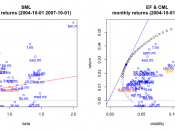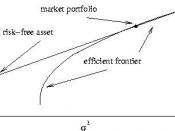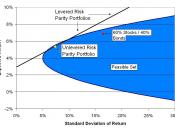Relevance of Capital Market Theory: David Nawrocki
1. The old theory of CAPM makes the assumption that the CAPM line represents a long term model of assets fluctuations and risks versus returns. However, it is shown that the historical data does not take into consideration influential changes in the economy such as new technology. Therefore, from year to year, data can considerably change. The new CAPM theory has evolved to make different assumptions. First, CAPM states that investors have homogenous expectations and investments horizons. Secondly, it does not take into consideration transactions and information costs (as we know however, transactions and most importantly information costs can be very expensive even though some information costs can be included in the transaction costs if done through traders.). Furthermore, the CAPM model assumes that all investors have access to the same amount of information which is not true considering that they either don't have the time or the will to go into a deep research as the optimal portfolio theory would suggest in order to maximize profit.
Although transactions and information costs along with equal access to information are important considerations, they can be eliminated for the model because they do not represent extremely changing variables for pricing an asset. David Nawrocki sates that the most important variable to include in the CAPM is the investors' expectations and investment horizons. This makes sense because as different individuals we have different needs and risks tolerance that can greatly affect the way we view an asset and the way we are going to create our portfolio.
2. The author explains in great details why this assumption is wrong in the CAPM model. First, as stated earlier, different individuals will react differently to an asset. Therefore wealthier investors will be less risk averse that the one...


